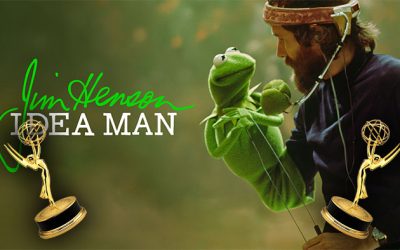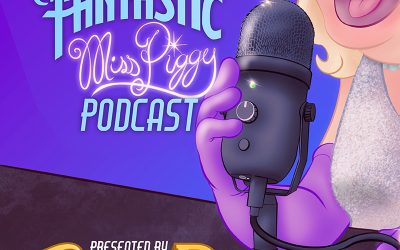Back to School
Part 1: Anatomy of a Mistake
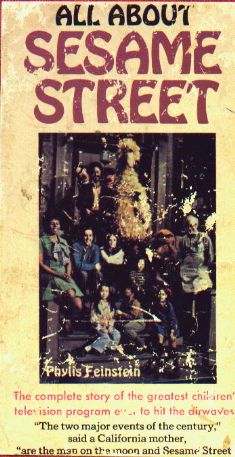 What is the Sesame Street Learning Kit, and exactly why did it fail to enchant the nation’s youth? For the true skinny, we turn to All About Sesame Street, a 1971 book by Phylis Feinstein that was, well, all about Sesame Street. This is an excerpt from chapter 16, “Shopping the Street”:
What is the Sesame Street Learning Kit, and exactly why did it fail to enchant the nation’s youth? For the true skinny, we turn to All About Sesame Street, a 1971 book by Phylis Feinstein that was, well, all about Sesame Street. This is an excerpt from chapter 16, “Shopping the Street”:
“Even the best intended and most cautious flirtations with commercialization have not left the Children’s Television Workshop with its artistic and intellectual virginity intact.”
— Carol B Leibman, The Village Voice
Have you seen the new flip-top trashcan called Oscar’s Palace? Or tasted the crunchy, chewy, yummy cereal endorsed by the Cookie Monster? Or have you caught Mr Hooper as pitchman for “Big Bird” hair tonic? Nope. And chances are you never will.
Despite the success of Sesame Street, CTW president Joan Cooney and her staff still must face the annual chore of putting together funding from foundations and government sources. But unlike previous broadcasting efforts, CTW has the opportunity to tap fresh sources of revenue through the vast commercial market which has opened up as a result of Sesame Street’s success. The potential “commercialization” of Sesame Street is staggering, as well as frightening.
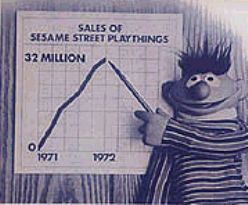 Potential marketers of Sesame products have already swamped CTW with their requests to manufacture a Sesame Street sanctioned “anything.” Their assaults range from the hard pitch (“If you don’t let us put your Sesame Street coloring book on the market by next fall, you’ll miss the opportunity of a lifetime”) to the altruistic Robin Hood gambit (“Let us promote our product to the middle-age class and you can give it away to the disadvantaged”).
Potential marketers of Sesame products have already swamped CTW with their requests to manufacture a Sesame Street sanctioned “anything.” Their assaults range from the hard pitch (“If you don’t let us put your Sesame Street coloring book on the market by next fall, you’ll miss the opportunity of a lifetime”) to the altruistic Robin Hood gambit (“Let us promote our product to the middle-age class and you can give it away to the disadvantaged”).
Some guys don’t even ask permission. CTW is up to its elbows in law-suits involving pirating companies who are trying to cash in on the show’s popularity. Muppets, Inc recently called halt to unauthorized Oscar and Big Bird imitations that wre destined for the children’s toy counter. In New Jersey, a company had been circulating a promotional brochure for “Sesame Nursery Centers” which used the exact type styles as CTW literature and offered “Sesame Nursery Center tested and approved products using the characters and graphics especially created for this educational preschool program.” Had the workshop not gotten wind of this venture and called in its lawyers, you would have been able to purchase clothing, watches, furniture, dolls, games, food, inflatables, jewelry, party goods, and vitamins carrying a label carefully designed to mimic Sesame Street’s.
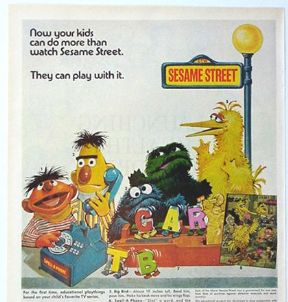 A large publisher of children’s books (who certainly should have known better) got caught up too. It packaged 12 softcover books and offered them with a leaflet using the color scheme, layout and light post and street sign motif of the CTW Parent Teacher Guide. When CTW mentioned the legal problems such a move would set in motion, the company quickly dropped plans to market its package.
A large publisher of children’s books (who certainly should have known better) got caught up too. It packaged 12 softcover books and offered them with a leaflet using the color scheme, layout and light post and street sign motif of the CTW Parent Teacher Guide. When CTW mentioned the legal problems such a move would set in motion, the company quickly dropped plans to market its package.
Before Sesame Street ever debuted on the air, CTW signed a contract with Time-Life Inc for the production of five “authorized” hard-cover volumes — the Sesame Street Books of Numbers, Letters, Puzzles, Shapes, People and Things. These books were first to be offered by mail only to Time-Life’s mailing lists, subscribers to the Sesame Street Parent Teacher Guide and other lists. Using the name “Sesame Street Learning Kit,” it included a cast-album record and two posters, and sold for $19.95. This expensive package was labeled by the Time-Life people as the “systems approach.” Eventually, too, the books would be sold separately at $3.95 each in bookstores under the auspices of Little, Brown and Company, a Time-Life subsidiary, and the record, produced by Columbia, would also be marketed individually.
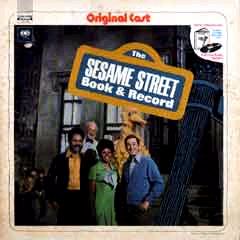 Actually, the tie-in between CTW and Time-Life began prior to the book. Time-Life offered to help promote Sesame Street through free advertising space and by underwriting the costs of a parent teacher guide. One million copies of the guide were printed monthly at a total cost of $120,000. One hundred thousand copies went to paid subscribers at the rate of $2 per year. These paid subscriptions covered Time-Life’s expenses and returned $80,000 to the Workshop. The other 900,000 copies were given away free to ghetto parents.
Actually, the tie-in between CTW and Time-Life began prior to the book. Time-Life offered to help promote Sesame Street through free advertising space and by underwriting the costs of a parent teacher guide. One million copies of the guide were printed monthly at a total cost of $120,000. One hundred thousand copies went to paid subscribers at the rate of $2 per year. These paid subscriptions covered Time-Life’s expenses and returned $80,000 to the Workshop. The other 900,000 copies were given away free to ghetto parents.
The Sesame Street Learning Kit for the most part was not well received. It is not hard to understand why the CTW staff didn’t see beforehand the double standard of producing a program aimed at the ghetto while sanctioning a high-priced book and record offer. They wre simply — and unfortunately — too involved with getting Sesame Street on the road to be reasoning out so much “minor” related matters.
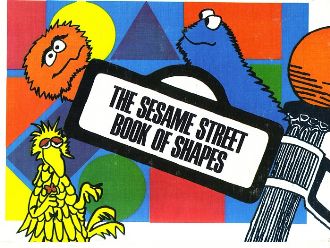 Bob Davidson, CTW’s director of development, who was appointed after the flak began falling about Time-Life’s “systems approach,” analyzes the misjudgement: “The negotiations were going on at a time when we were just going on the air. It was an added nuisance, and frankly it turned out to be an ill-considered nuisance.” Davidson, along with many CTW staffers, objects to the cost of the Time-Life books and also the apparent lack of research on their effectiveness. It is felt that the books’ format — transposing the video material, almost exactly, into print — is unworkable. It is, in fact, the antithesis of CTW philosophy.
Bob Davidson, CTW’s director of development, who was appointed after the flak began falling about Time-Life’s “systems approach,” analyzes the misjudgement: “The negotiations were going on at a time when we were just going on the air. It was an added nuisance, and frankly it turned out to be an ill-considered nuisance.” Davidson, along with many CTW staffers, objects to the cost of the Time-Life books and also the apparent lack of research on their effectiveness. It is felt that the books’ format — transposing the video material, almost exactly, into print — is unworkable. It is, in fact, the antithesis of CTW philosophy.
Carol B Leibman, in her article for The Village Voice, “Sesame Street Learned It’s Paved With Gold,” blasts the books’ inadequacies: “If the reaction of a couple of three-year-old Sesame Street addicts and their parents to the Time-Life kit is any indication, the first Sesame Street books will get no A’s. While the books do some interesting things — grouping letters by shape, for example — they come off for the most part as slick, expensive, boring combinations of workbook and comic book. Children are happy to see pictures of their favorite Sesame Street characters, but frames from various film sequences reproduced in small scale with dialogue under each frame do not hold their interest long.”
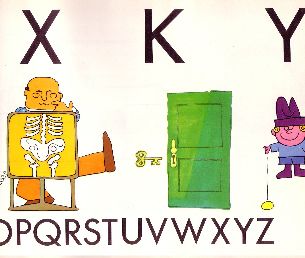 Having been burned once, Davidson says about Sesame’s further ventures into commercial territory: “Now that we have more time to give thought to this kind of thing, I would like to see future projects done differently.” The Workshop will not try to become self-sufficient through commercialization, but it is not going to reject this aspect entirely. “While we are still developing our policy on commercial involvement,” Davidson says, “our feeling now is that where we are involved at all with commercial ventures, they must have an educational value. We are not interested in moving quickly. It will take a long time to have a feel about what we ought to do, particularly in regard to control of the products. But it would be criminal and to see what the opportunities could mean in every way — educationally and financially.”
Having been burned once, Davidson says about Sesame’s further ventures into commercial territory: “Now that we have more time to give thought to this kind of thing, I would like to see future projects done differently.” The Workshop will not try to become self-sufficient through commercialization, but it is not going to reject this aspect entirely. “While we are still developing our policy on commercial involvement,” Davidson says, “our feeling now is that where we are involved at all with commercial ventures, they must have an educational value. We are not interested in moving quickly. It will take a long time to have a feel about what we ought to do, particularly in regard to control of the products. But it would be criminal and to see what the opportunities could mean in every way — educationally and financially.”
Another aspect of commercialism infringing upon Sesame Street’s “purity” is what to do about the cast. It is clear that the actors should avoid becoming pitchmen for products, but it is more difficult drawing the line for other possibilities. What about public service announcements? Should Sesame Street characters get involved with urging parents to take children to the dentist twice a year? What about ads on either commercial or public TV warning of the dangers of cigarettes or drugs? What, also, of personal appearances, club dates, and record cuttings?
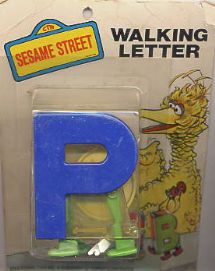 The Workshop has drawn up a detailed contract for its cast. The goal is to provide a contract which protects the viewers and CTW while allowing the actors to realize economic benefits from their success.
The Workshop has drawn up a detailed contract for its cast. The goal is to provide a contract which protects the viewers and CTW while allowing the actors to realize economic benefits from their success.
Recent policy decisions also indicate the directions CTW is taking in regard to product marketing. First, CTW has decided that no company will be given exclusive rights to production of any products. Time-Life has produced five books, but CTW remains free to sign with another publisher for more. Second, CTW will retain the right to approve not only products, but promotional activities. Third, Sesame Street will not be involved in developing products for simultaneous use on the show and for sale. Fourth, Sesame Street products will not be offered as premiums for buying something else — no three box tops and $2 for a $3.95 book. Products which have no educational value will not be considered.
by Danny Horn


